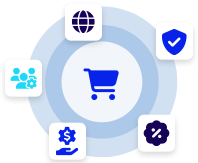Automated software testing is a process where tests are executed automatically using specialized software tools, removing the need for manual testing. This approach speeds up the testing process, increases accuracy, and allows Quality Assurance (QA) teams to focus on more complex issues rather than repetitive tasks.
By using automated testing, organizations—especially SaaS providers—can ensure that software updates and new releases meet quality standards without significantly delaying development timelines.
Automated testing works by scripting test cases, which the automation tools then run independently across the application. These scripts can be written in languages like Java or Python, depending on the software’s requirements and the testing framework in use. This method enables fast, consistent, and scalable testing, a vital advantage for SaaS applications that undergo continuous updates and need rigorous testing cycles.
Types of Automated Testing
There are several types of automated testing, each serving a different purpose in the software lifecycle:
- Unit Testing: This tests individual components or functions of the code. It’s a foundational testing type often performed early in development to catch bugs quickly.
- Integration Testing: Here, interactions between different modules or services are tested to ensure that components work well together. For example, API testing ensures that endpoints function correctly and provide accurate responses.
- End-to-End Testing: This tests the application as a whole, simulating user workflows from start to finish. It’s critical for ensuring the software functions properly from a user’s perspective.
- Data-Driven Testing: As the name suggests, this testing type uses a variety of data inputs to test different scenarios, which helps in validating responses and behavior under varying conditions.
Automated tests can also include load testing, security testing, and UI testing, each focusing on specific aspects of the application. The versatility of automated testing helps ensure that all bases are covered without slowing down the development cycle.
How Does Automated Software Testing Work?
Automated testing generally starts with selecting an appropriate framework, such as Selenium for UI testing, or JUnit for unit testing in Java. After choosing a framework, QA teams use automation tools to write scripts for each test case, specifying expected outcomes for every function or interaction within the software. When tests are run, these tools compare the actual output with the expected result to identify any discrepancies.
The automation tools then generate reports on the test results, which provide valuable insights for the development team. These reports highlight which tests passed or failed, and where issues may exist. This approach allows faster identification of issues, saving time and helping to maintain software quality, especially in environments where continuous integration and continuous deployment (CI/CD) are in place.
Automated software testing is essential for maintaining quality standards in complex applications, particularly for SaaS providers, as it ensures fast, accurate, and reliable results across development cycles.













